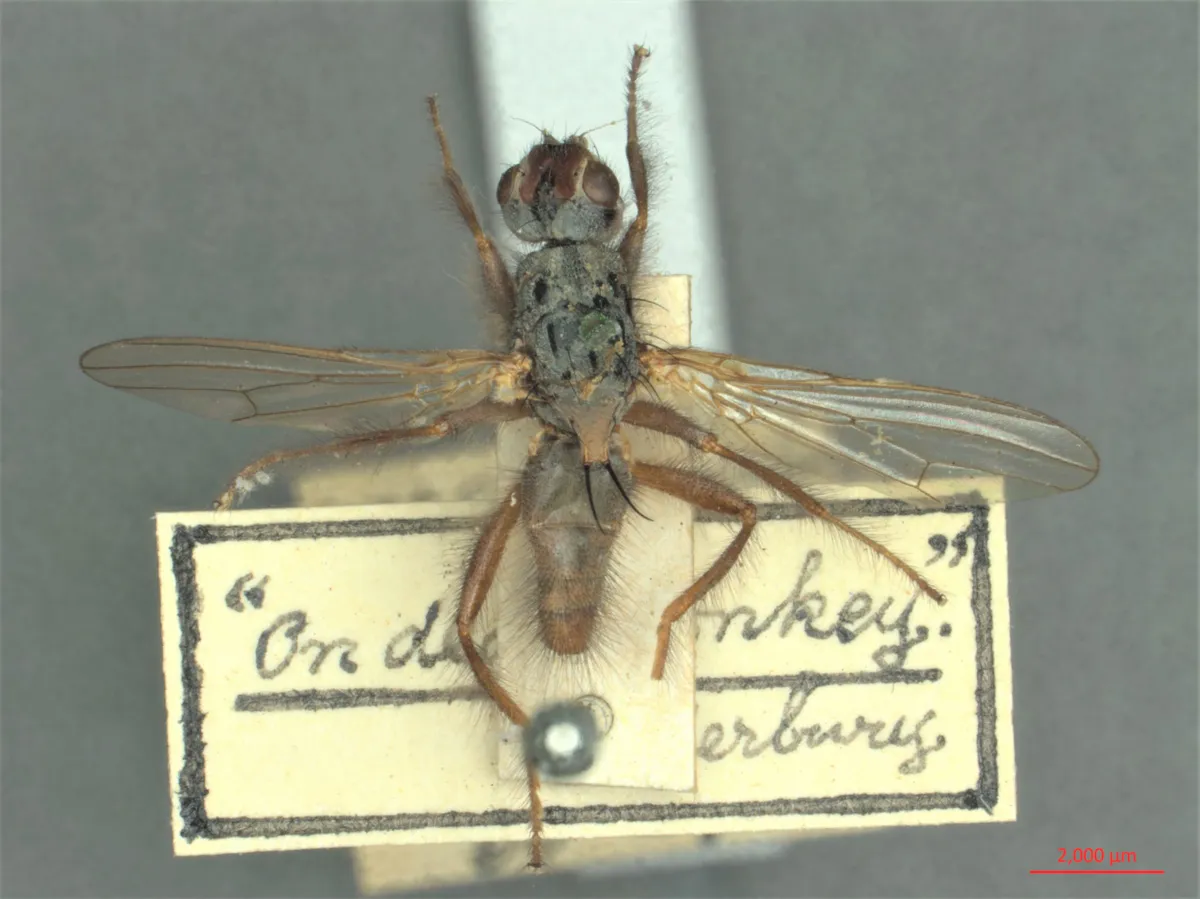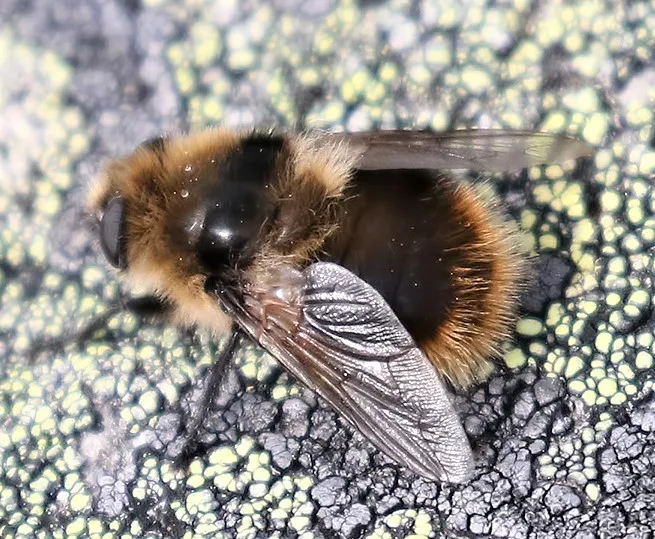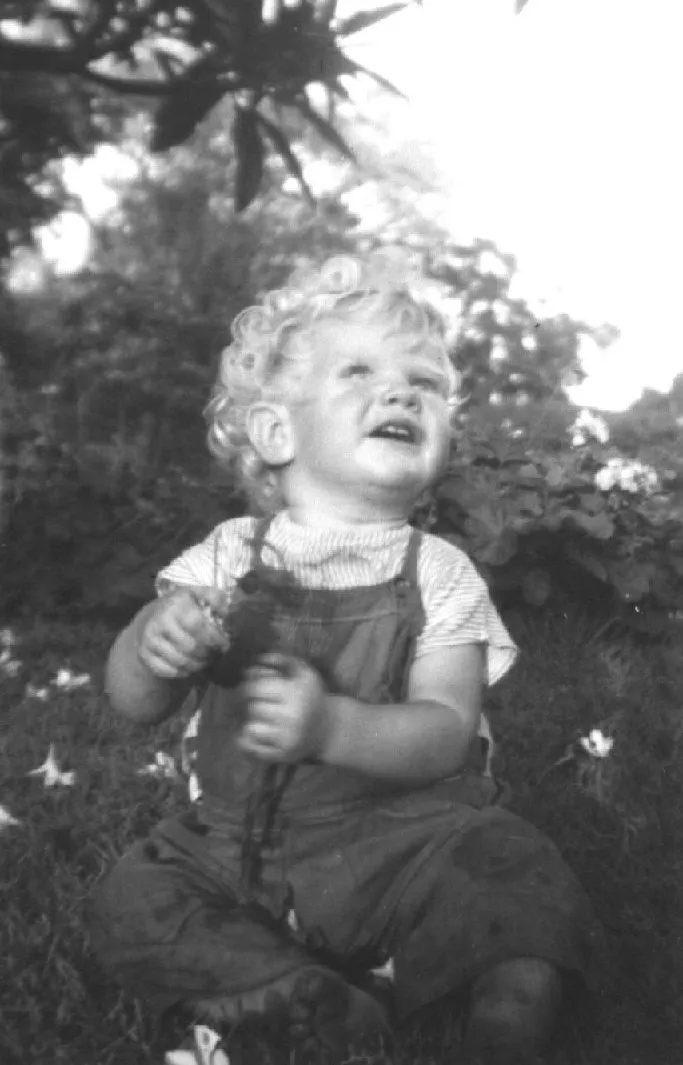The Dead Donkey Fly
Centrophlebomyia furcata (family Piophilidae)
A fly of myth and legend, it has been the holy grail of many dipterists over the last century. It looks like a Samurai dung fly, with two exceptionally long, upcurved bristles arising from the scutellum (towards the back of the thorax)
Centrophlebomyia: Hendel (1903), when coining the genus name, refers to the Greek “centro” (κεντρον = sharp point) and “phleps” (φλεψ = vein).
In the differences between it and Thyreophorahe specifically says that Centrophlebomyiahas notable isolated bristles on the costa, whereas that of Thyreophorasimply has the standard pubescence. As for the species name – originally described in the genus Musca by Fabricius (1794), who notes “scutello porrecto bifurcato” [= scutellum extended, forked]. Hence the name “furcata”.
So the name translates as “fly with sharp bristles on a vein, and forked [scutellum]”
But in Britain it is affectionately and more simply known as “the dead donkey fly” - and is thought to be extinct in this country. At one time it may have been relatively common, if overlooked, as the maggots feed in the marrow cavities of the bones of large (dead) mammals.
The last British example was found on carrion in Chippenham Fen in 1908, but Colonel Yerbury was the most successful collector of this species, finding it on several occasions at Mt Edgcumbe Park (Cornwall) and Porthcawl (Glamorgan).

A related species, Piophila caesi, has maggots which are able to jump by holding on to their tails with their mouthparts, tensing the body, then suddenly letting go. This behaviour has earned them the name of “cheese skippers” (cheese and dried meats being their favoured habitat).
Consequently the tribe Thyreophorini, including Centrophlebomyia are often called “bone skippers”. Adults are most often collected in the winter months which goes some way to explaining why they are scarce in collections. (Most entomologists seldom venture out when it is cold!)
It is most likely that the species’ extinction in Britain is as a result of public health regulations – large carcasses of pigs, dogs or donkeys are not permitted to lie around over winter.
In the same way that scarce dead-wood species of beetles and flies are threatened by “over-tidying” forests and woodland, so carrion-feeding species are finding it more difficult to find the carcasses they need to survive.
Many thanks to Gordon Ramel for allowing me to include his short poem about this species.
My Piophilidae
Centrophlebomyia,
oh how I love your name.
I’ve mouthed a lot of other flies,
but the sound is not the same.
You are so neat, so nicely spotted
that I really am besotted,
your upward-sweeping furcal spines
are so sublime and sensual
that they deserve poetic lines
more sweetly orolingual.
I said you were a bony fly
alas it seems my words did lie,
as in my search for quiet fun
I vaguely tried to make a pun.
You have no bones, I can’t deny,
it, but you like to rest on one.
And when I dare to ask you why
you silently makes this reply.
“Because my body’s built petitely
I like to lay my eggs discretely.
Although the space inside is narrow
my babies really love that marrow.”
Gordon Ramel, 2010
And finally – Cephenemyia trompe (family Oestridae) – the Reindeer Bot-fly

Cephenemyia: Latreille coined the name Cephenemyia in 1818, referring to it as “mouche-bourdon” – the bumblebee-fly, which certainly sums up its appearance.
Cephenemyia comes from the Greek “cepheno” (κηφην =a drone), and “myia” (μυια = a fly). Modeer (1786) was the person who first described this particular species. The specific name, trompe, is a local (Sámi)word for a bot-fly in northern Scandinavia.
Its hairy coat probably serves a dual function – mimicking a bumblebee (and thus deriving protection from predatory birds, etc.), and keeping it warm so that it can fly efficiently in cold weather.
Its cuddly appearance helps to compensate for a rather unappealing life history. The fly sprays droplets of water containing young larvae directly into the mouth or nostrils of reindeer (Rangifer tarandus), and the maggots move down into the throat.
There they feed on blood and mucus until mature, overwintering in their host. The skin of the bot-fly larva is covered in spicules which helps it stay put in the reindeer’s throat.
In the spring, they crawl back up into the nose whence they are sneezed out to pupate on the ground. I imagine that having large maggots crawling in your throat and then into your nose is irritating – indeed the irritation is essential to get the deer to cough and sneeze, and maybe some deer do end up with a large red nose!

A very similar native species, Cephenemyia auribarbis, does the same with red deer (Cervus elaphus), and is widespread throughout the Scottish highlands.
However Cephenemyia trompe was introduced with its host and it seems that the small herd of reindeer living semi-wild in the Cairngorms may have managed to get free of its parasite, so it may be extinct in Britain now.
One of the perils of being a specialised parasite is that reliance on one host species can lead to extinction if the host population drops to low numbers. And especially if the hosts receive anti-parasite treatments, as many semi-domestic animals do now.
To complicate matters further, there is another Reindeer parasite, Hypoderma (Oedemagena) tarandi – the reindeer warble fly – whose larvae live under the skin of the deer, forming lumps or “warbles”. This has also been recorded in the British Isles, but only in captive reindeer such as those in zoos.

Tony Irwin has been interested in flies from an early age, but only recently has he realised just how much he doesn’t know about them.
Fortunately, within the Dipterists Forum there are lots of people who don’t know different stuff, so between us we know quite a lot, and the Forum enables us to share what we know with those who hadn’t realised they didn’t know it. Brilliant!
Main image: Centrophlebomyia furcata from Greece. © Gordon Ramel